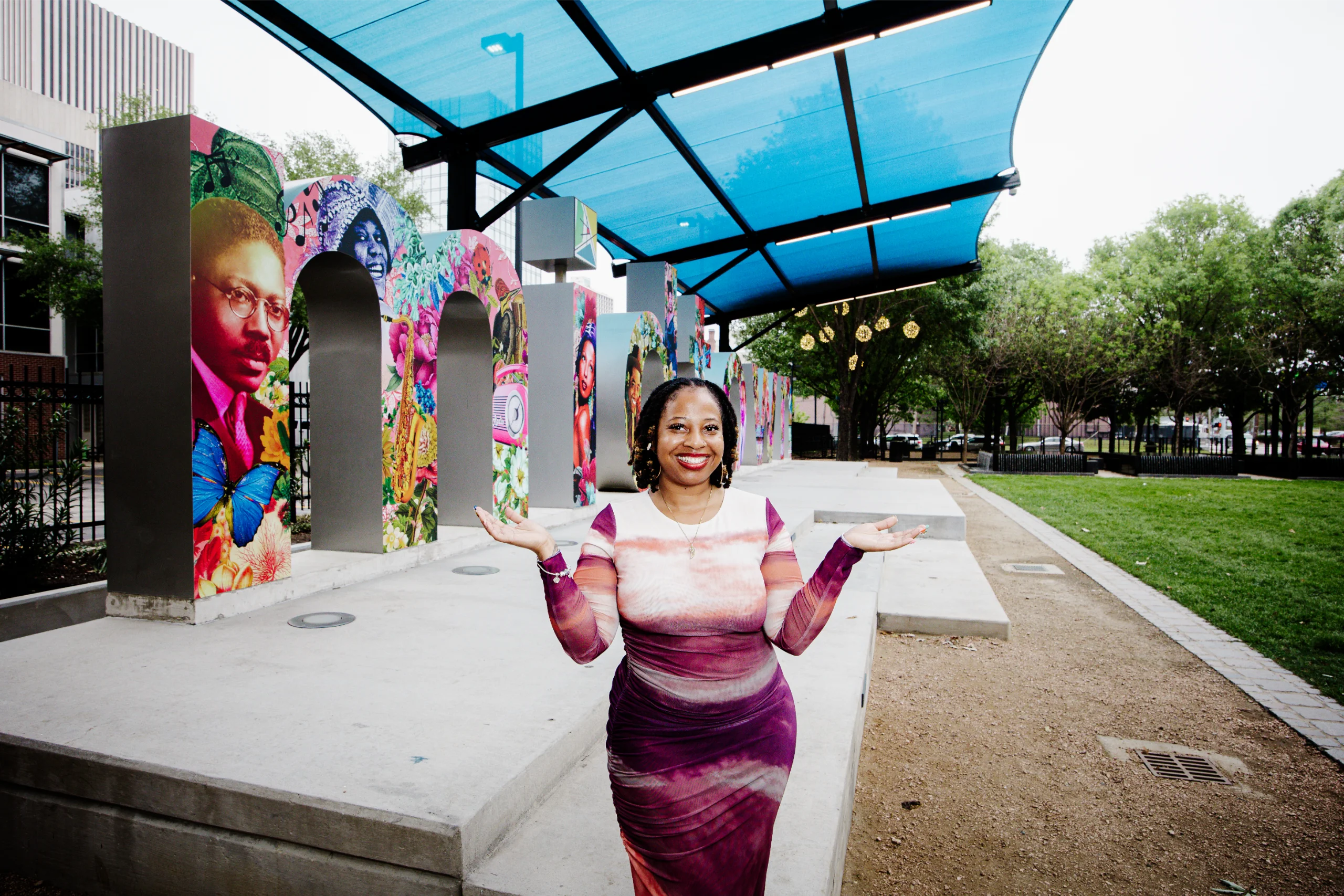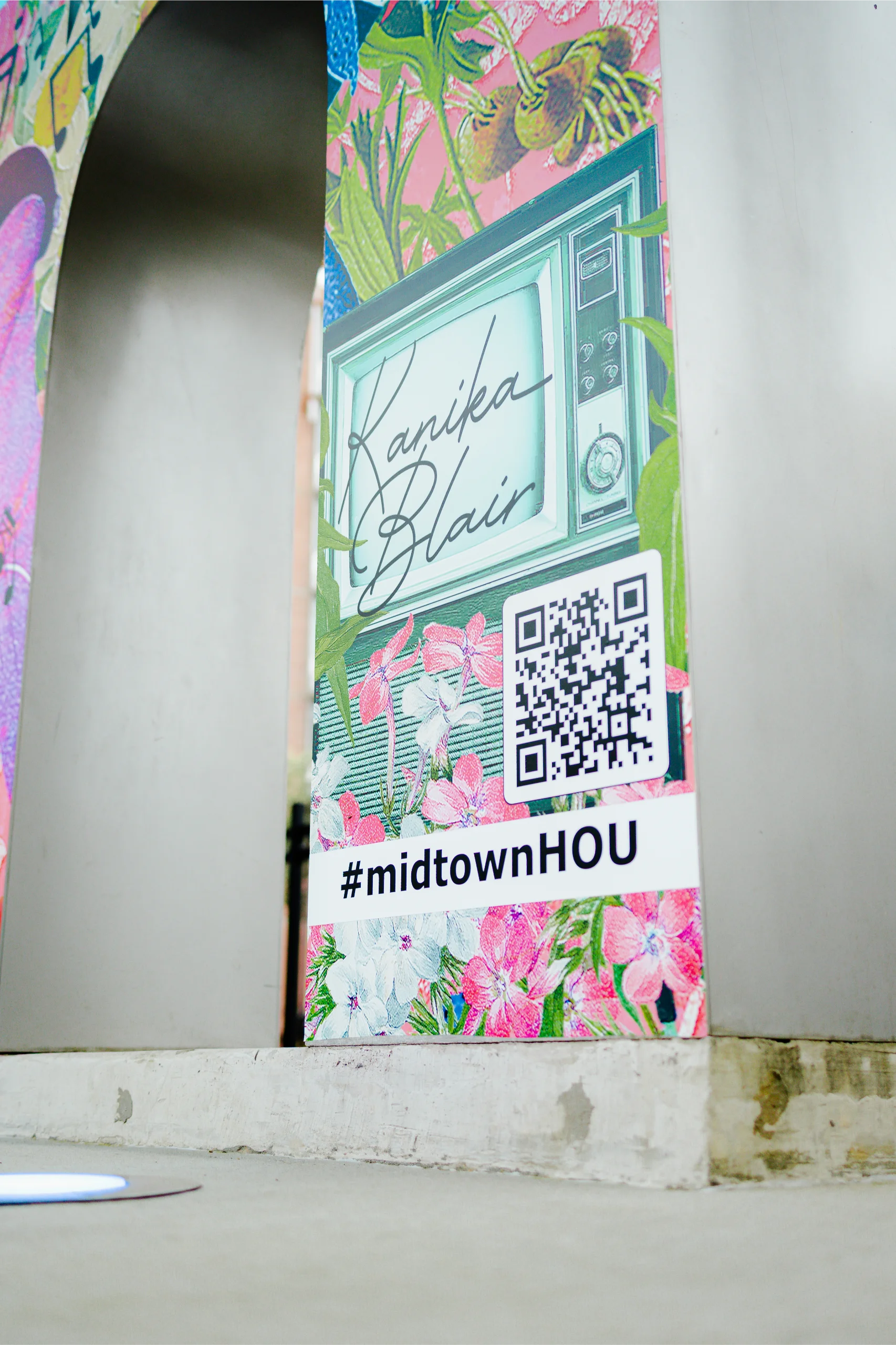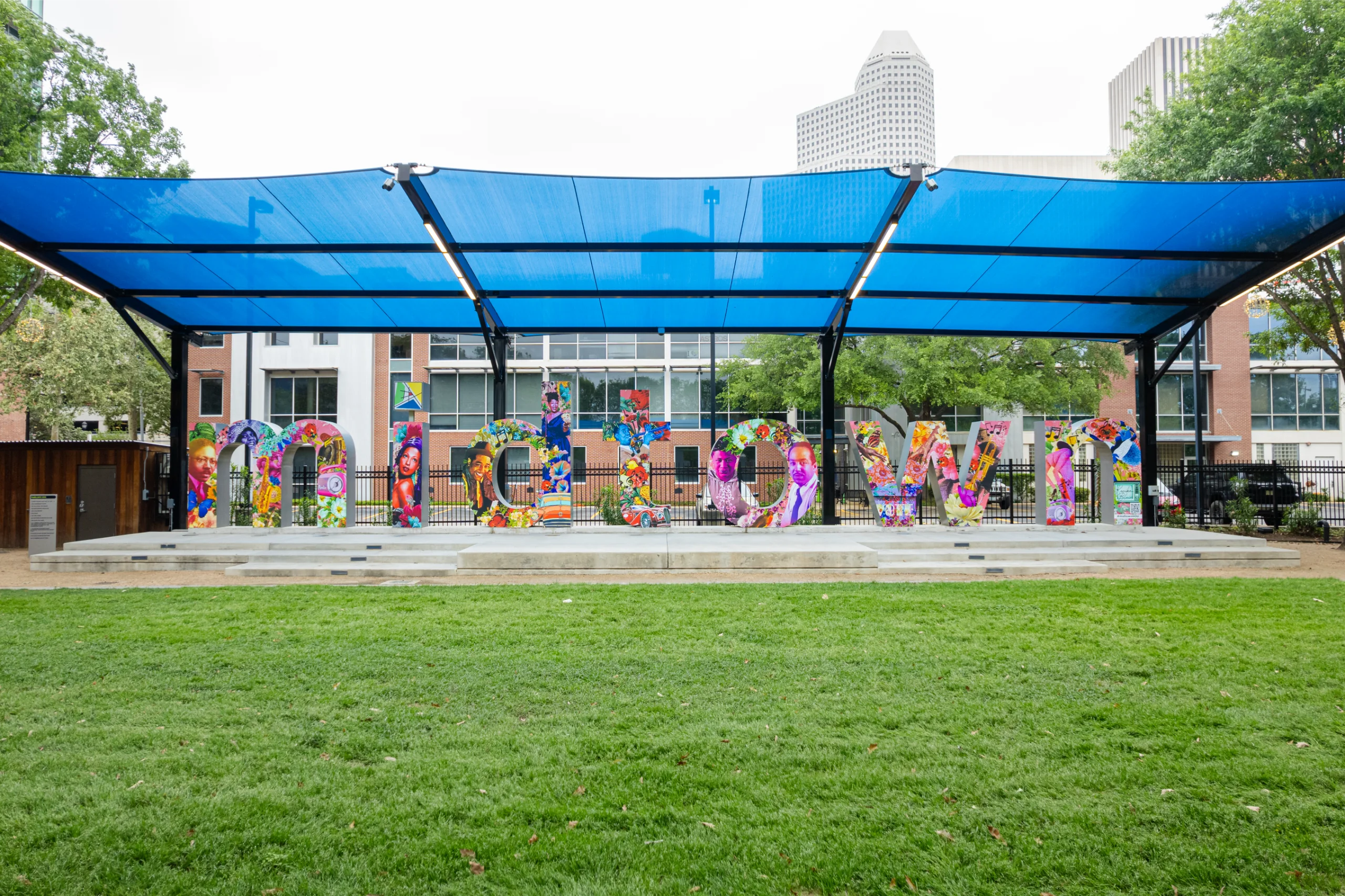Midtown Houston is welcoming the spring season with a vibrant celebration of American art and culture. As part of Midtown’s seasonal public art initiative, the Midtown sign at Bagby Park (415 Gray Street) will be transformed into a large-scale temporary art installation titled Echoes of the Renaissance. This visually captivating display honors the dynamic legacy of the 1920s and brings the energy of the Roaring Twenties to life in the heart of Houston.
Honoring a Transformative Decade
The decade from 1920 to 1929—known as the Roaring Twenties—was a time of immense social, cultural, and artistic change in America. Jazz music soared in popularity, fashion and design broke from tradition, and the Harlem Renaissance sparked a wave of creativity that continues to inspire generations. The era marked a national shift in identity and expression, with art, music, spoken word, and cultural pride flourishing in cities across the country.
This spring’s Midtown sign wrap captures the essence of that groundbreaking decade, offering a contemporary interpretation that celebrates both its historical significance and lasting influence. The artwork will be displayed on the 8-foot-tall, 81-foot-wide Midtown sign and installed just in time for the start of the spring season. The installation will be on display from March 27 to May 1, 2025.

Meet the Artist: Kanika Blair
Houston-based artist Kanika Blair was awarded the commission to design this season’s installation. Blair is a visionary digital artist, 3D creator, and surrealist whose work blends Afrofuturism, mythology, astrology, and ancestral wisdom. Known for her celestial, dreamlike visuals, Blair’s work pays tribute to the divinity and resilience of Black culture, Indigenous women, and women of color.
Through Echoes of the Renaissance, Blair reimagines the creative power of the 1920s through a modern, cosmic lens—one that invites viewers to reflect on identity, transformation, and cultural rebirth. Her design channels the spirit of the Harlem Renaissance while envisioning what a modern renaissance might look like today, filled with divine feminine energy and cosmic symbolism.
“The Roaring Twenties were a time of cultural revolution,” Blair shared. “With this piece, I wanted to honor the legacy of that era while imagining how its spirit lives on in today’s art, music, and voices of empowerment.”

Public Art in Midtown: A Tribute to Harlem Renaissance Icons
In this season’s art installation, each bold letter of the MIDTOWN sign serves as a canvas celebrating the cultural giants of the Harlem Renaissance. Artist Kanika Blair has infused the installation with the stories of visionary artists, musicians, and writers whose work defined a generation and shaped the future of Black creativity.
- M – Aaron Douglas and Bessie Smith
- Aaron Douglas, often called the “father of African American art,” was a pivotal figure in the Harlem Renaissance. A graduate of the University of Nebraska in 1922, Douglas moved to Harlem in the mid-1920s, where he developed a distinctive visual language that blended African heritage with modernism.
- Bessie Smith, known as the “Empress of the Blues,” had a deep contralto voice and was first recorded in 1923. Her influence on jazz and blues remains legendary. She was inducted into the Rock and Roll Hall of Fame in 1989.
- I – Josephine Baker
- Singer, dancer, and civil rights activist Josephine Baker left the United States in 1925 and became the most celebrated performer at the Folies Bergère in Paris. Her iconic banana skirt costume in the 1927 revue Un vent de folie became a symbol of the Jazz Age and Roaring Twenties.
- D – Duke Ellington and Ella Fitzgerald
- Duke Ellington, a groundbreaking jazz pianist and composer, was one of the originators of Big Band Jazz. Over his 50-year career, he earned 13 Grammy Awards and collaborated with other icons like Ella Fitzgerald and Louis Armstrong.
- Ella Fitzgerald, the “Queen of Jazz,” was celebrated for her perfect pitch and pure vocal tone. Influenced by the Harlem Renaissance and Louis Armstrong, she began singing on Harlem’s streets at age 17 and went on to win 14 Grammy Awards.
- T – Louis Armstrong
- Known as “Satchmo,” Louis Armstrong was born in New Orleans and rose to fame in the 1920s as “The World’s Greatest Trumpet Player.” His innovative style and charisma transformed jazz and made him a central figure of the Harlem Renaissance.
- O – Zora Neale Hurston and Langston Hughes
- Zora Neale Hurston was a writer, folklorist, and the first-ever Black documentary filmmaker. She arrived in Harlem in 1925 and quickly became one of the Renaissance’s most influential voices, using her work to explore racial identity and Southern Black life.
- Langston Hughes, often considered the literary voice of the Harlem Renaissance, wrote poetry and books that echoed the rhythm and depth of jazz. His work celebrated the Black experience with honesty, creativity, and cultural pride.
Each letter is a tribute to a legacy. The Midtown sign becomes a living monument to the power of art, music, and storytelling that shaped the Roaring Twenties and continues to inspire a new generation.
Since 2022, the Midtown Cultural Arts and Entertainment District has invited artists and designers to create rotating seasonal installations for the Midtown sign. These projects showcase Houston’s rich cultural diversity and provide artists with a high-visibility platform to share their work with the community.
Visit Bagby Park and Experience the Art
We invite you to visit Bagby Park in Midtown Houston to see Echoes of the Renaissance in person. Whether you’re drawn to the beauty of the design or curious about the story behind it, this one-of-a-kind public art installation offers a meaningful moment of connection with Houston’s creative community.
Midtown Houston has been a catalyst in supporting art in every form. Our community is a designated State of Texas Cultural Arts and Entertainment District (2012). We are known for our many attractions, including picturesque park spaces, long-standing cultural arts organizations, impactful public art, and national award-winning public art. This is a project of the Midtown Cultural Arts and Entertainment District in association with the Midtown Management District. Many thanks to the Houston Endowment for funding this project.
Visit Bagby Park is located at 415 Gray St, Houston, TX 77002, to see the art installation.
